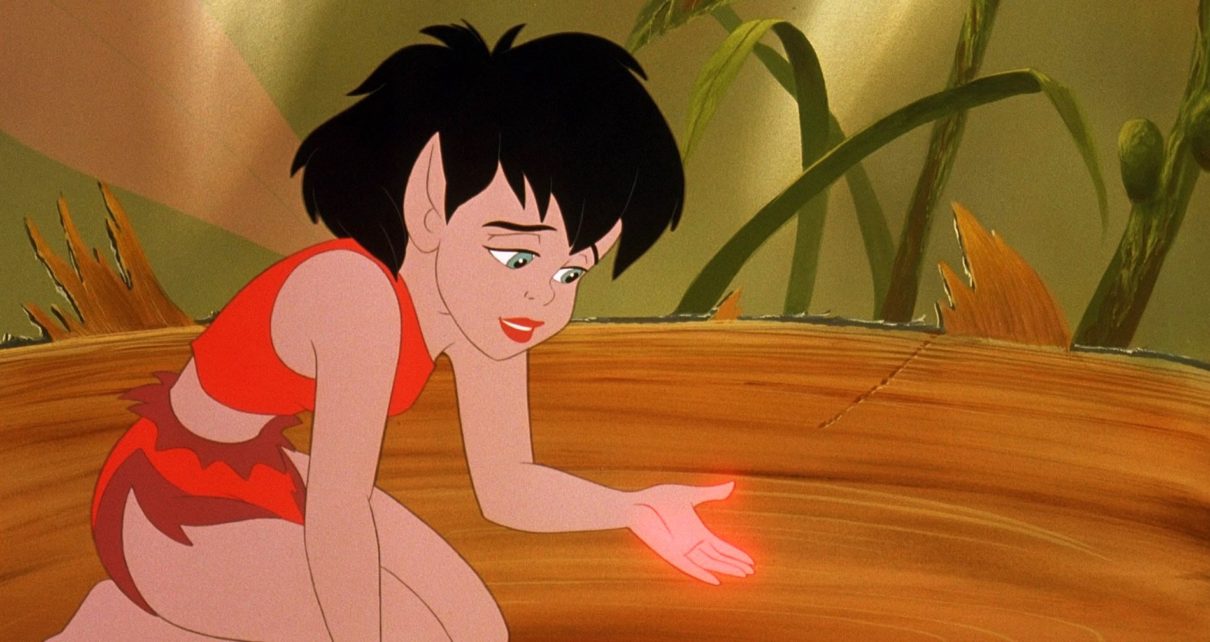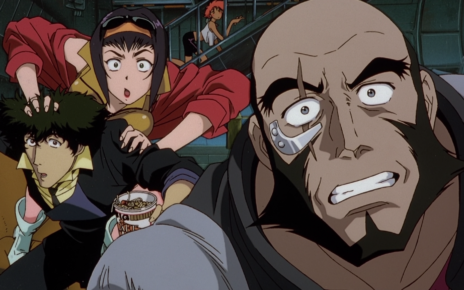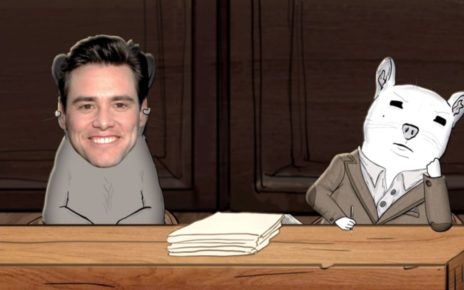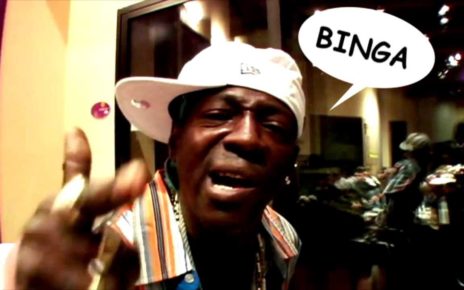Revisiting childhood cartoons is a roll of the dice — some are better left in the nostalgic patina of memory. But I am here to tell you FernGully: The Last Rainforest holds up — mostly! Which is pretty good for a 25-year-old film. It’s also on Netflix right now, so you can thank me for your Friday night plans.
The story follows Crysta, a rebellious fairy from a tribe that mostly just helps their corner of the Australian rainforest, FernGully, to grow. Everything is great in FernGully! Populations of pre-industrial humans used to live there, but left when a destructive spirit, Hexxus, emerged from the volcano to destroy them. Good thing the fairies were there to trap his spirit in a nasty-looking tree!
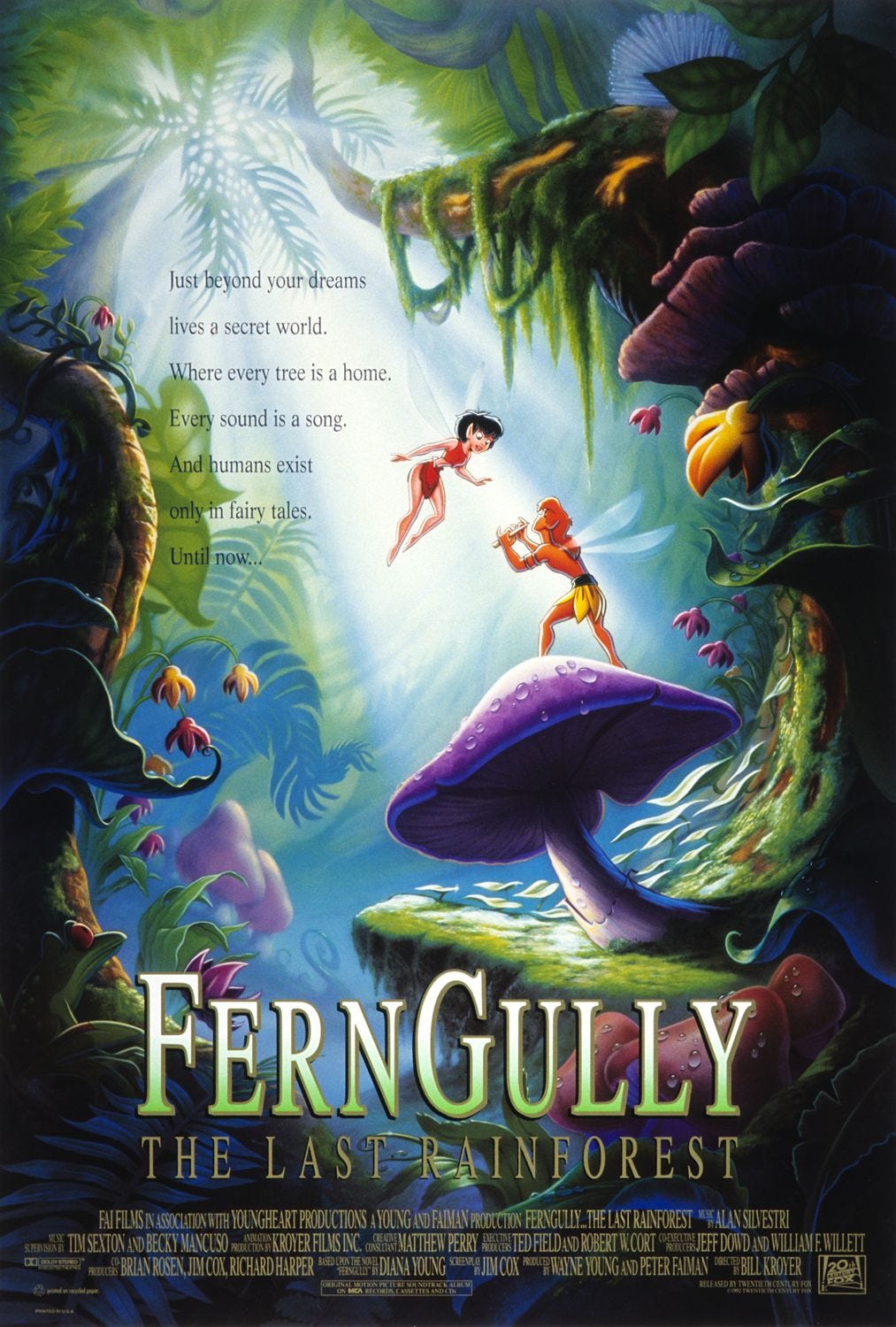
Crysta finds a friend in Batty, a fruit bat on the lam from an animal testing facility, and we hear the legendary Batty Rap. It is legendarily awful, because Robin Williams, who voices Batty (in his first voiceover role, 10 months before the release of Aladdin), is not a rapper. But this was released in 1992, so we had to have something with this new, hip style of music.
Despite what these fairies believe, humans have returned! And they’re harvesting the rainforest! For timber! And guess which tree they cut down? Hexxus’ tree. Because, of course. One human, Zack, gets miniaturized accidentally when Crysta tries to save him from a falling tree. They escape the danger, have a few scenes where Crysta reveals to Zack the magic of the rainforest, and we hear a few sweet tracks (one from Raffi and one written by Jimmy Buffett and performed by Tone Lōc — which isn’t that bad a combo), the perfect recipe for advancing a romance subplot.
Meanwhile, Hexxus, freed from his tree, falls in love with harvester equipment. He’s sludge, he’s slime, he’s oil and exhaust. He’s voiced by Tim Curry, and he’s going to drive that harvester straight to FernGully to destroy it. It’s bananas, and it’s awesome.
In the end, Crysta finds her magic prowess, re-traps Hexxus in a tree, saves FernGully, and re-embiggens Zack, who, with his new knowledge of the magic and value of the forest, decides to go back to the humans and tell them that the forest shouldn’t be cut down. The movie ends there, probably because we all know that Zack won’t be successful and FernGully probably has a lot of the specific trees very valuable to Australia’s logging industry.
Despite that, the film’s environmental message stays on target, even if the Batty Rap about the tortures of animal testing is a little off-base. It doesn’t fall into the tempting oversimplifications children’s environmental parables may lean on, like saying that cities are bad places. It demonstrates the beauty and inspiration inside the rainforest, and sends the message that anyone, even the tiniest creature, can protect the earth and help it grow.
A few of its elements — a couple songs, the odd wisecrack here and there — anchor it to 1992, but overall, I declare this a safe childhood film to revisit. It might just re-inspire you to love the earth.
Thanks for reading The Dot and Line, where we talk about animation of all kinds. Don’t forget to ❤ this article and follow us on Twitter and Facebook.


